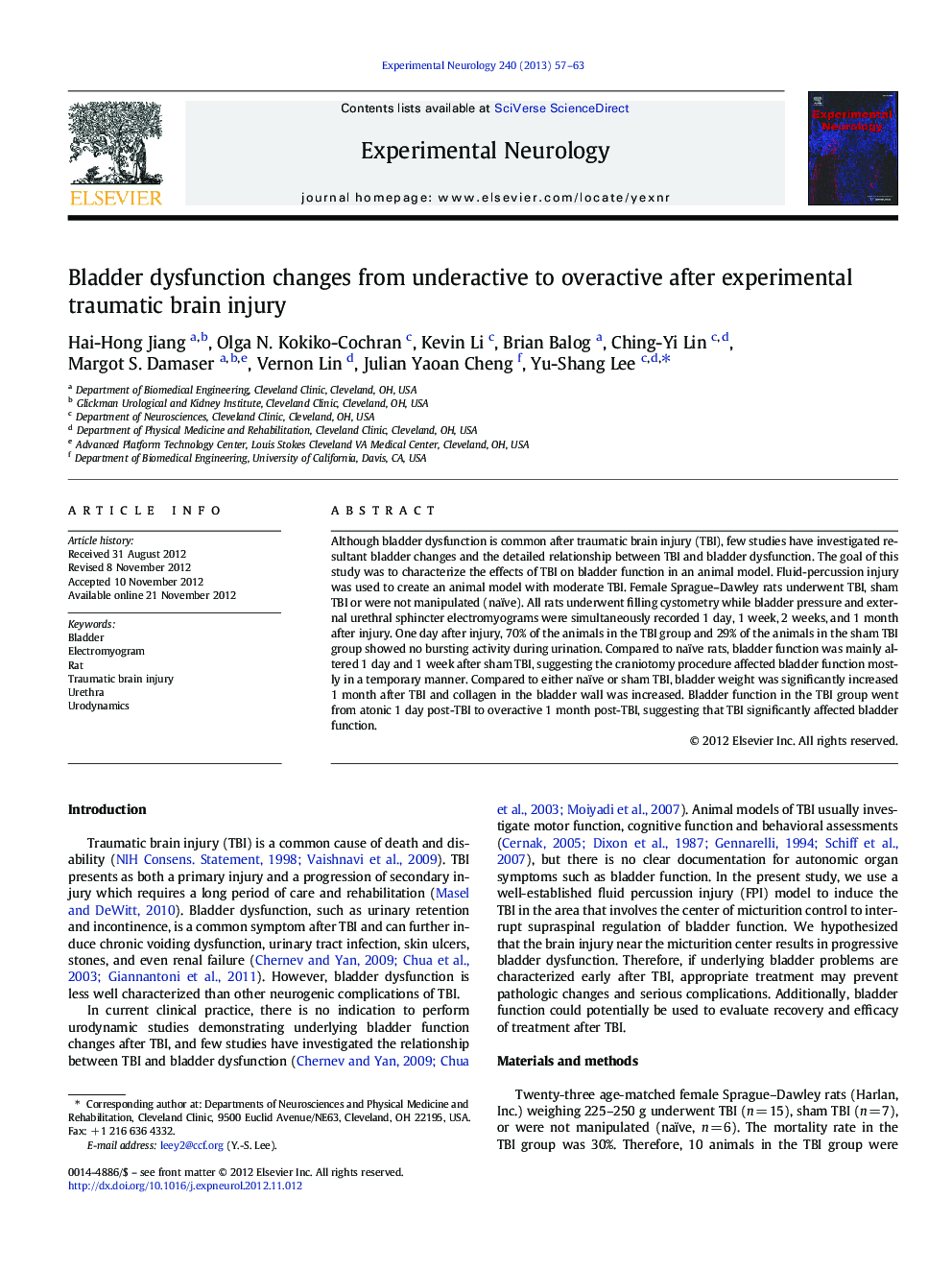| Article ID | Journal | Published Year | Pages | File Type |
|---|---|---|---|---|
| 6018427 | Experimental Neurology | 2013 | 7 Pages |
Although bladder dysfunction is common after traumatic brain injury (TBI), few studies have investigated resultant bladder changes and the detailed relationship between TBI and bladder dysfunction. The goal of this study was to characterize the effects of TBI on bladder function in an animal model. Fluid-percussion injury was used to create an animal model with moderate TBI. Female Sprague-Dawley rats underwent TBI, sham TBI or were not manipulated (naïve). All rats underwent filling cystometry while bladder pressure and external urethral sphincter electromyograms were simultaneously recorded 1Â day, 1Â week, 2Â weeks, and 1Â month after injury. One day after injury, 70% of the animals in the TBI group and 29% of the animals in the sham TBI group showed no bursting activity during urination. Compared to naïve rats, bladder function was mainly altered 1Â day and 1Â week after sham TBI, suggesting the craniotomy procedure affected bladder function mostly in a temporary manner. Compared to either naïve or sham TBI, bladder weight was significantly increased 1Â month after TBI and collagen in the bladder wall was increased. Bladder function in the TBI group went from atonic 1Â day post-TBI to overactive 1Â month post-TBI, suggesting that TBI significantly affected bladder function.
⺠Characterization of bladder dysfunction after traumatic brain injury ⺠There is no significant tissue damage at target area after 1 month post injury. ⺠Bladder control is a potential long term clinical issue after traumatic brain injury.
